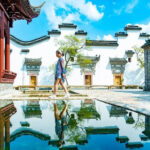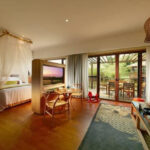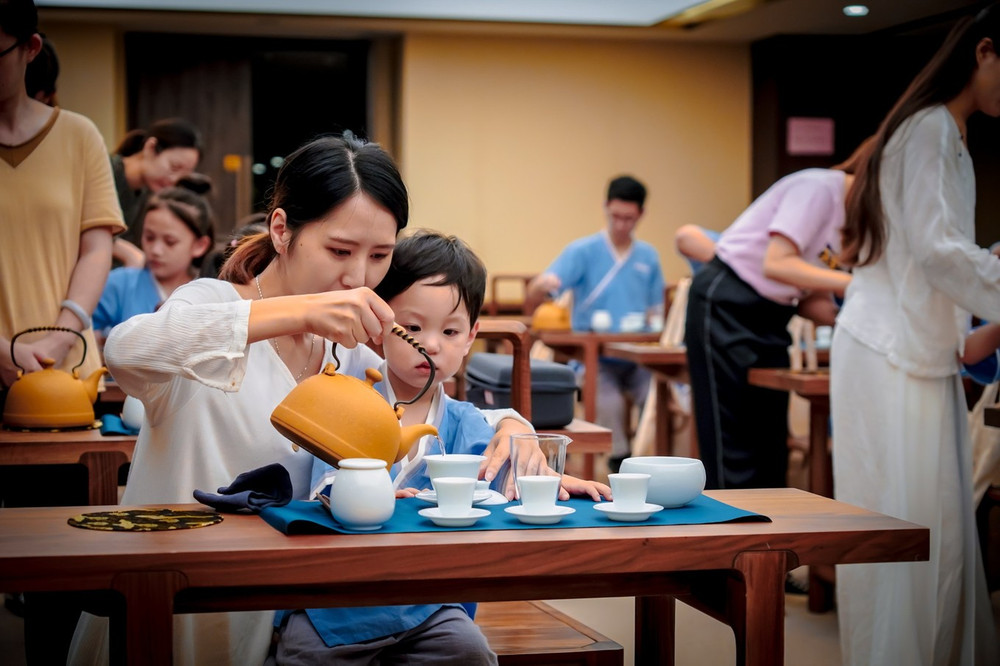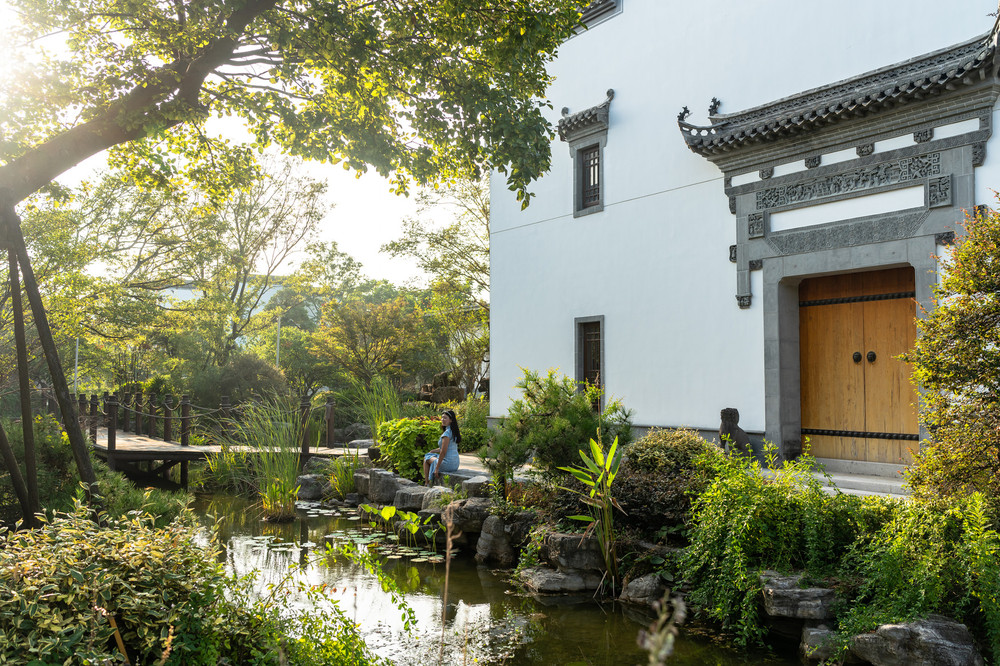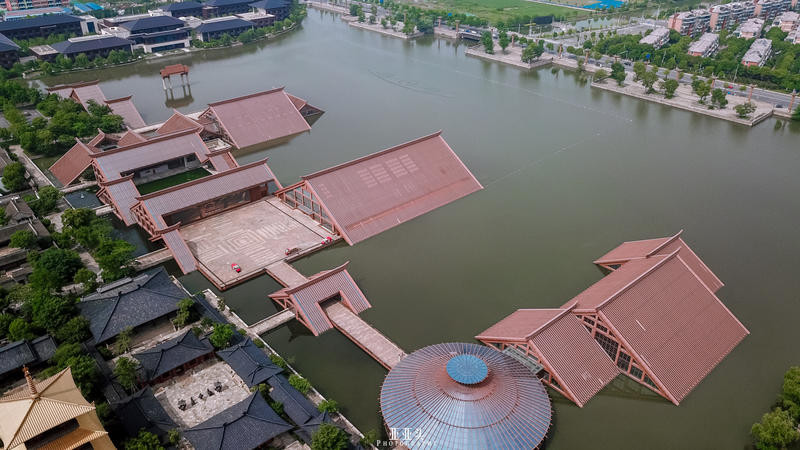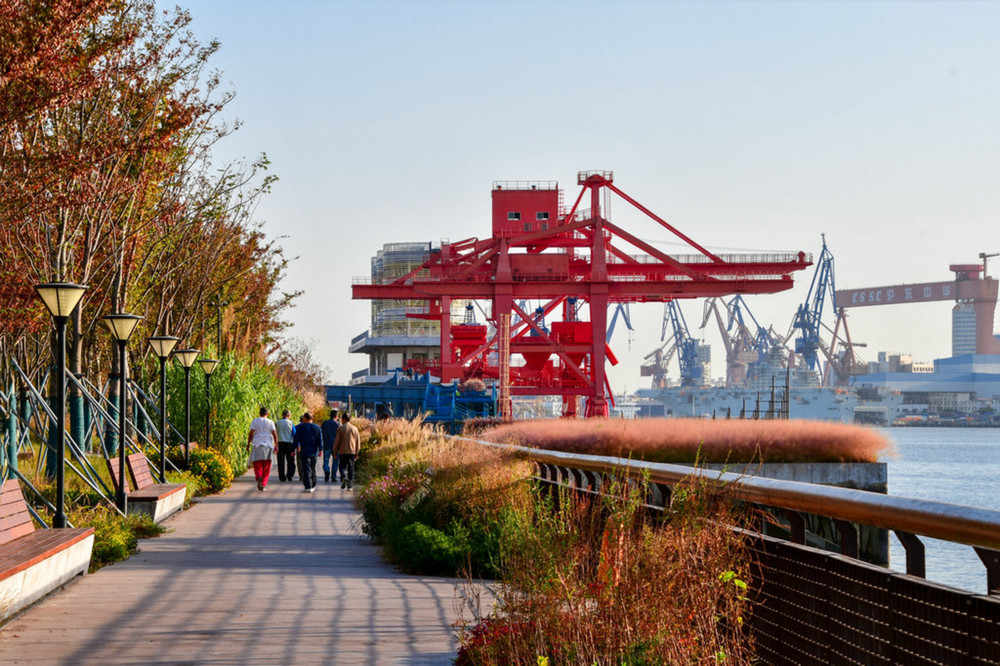Published on 2022-11-27 at 17:23
Duration: 1 Day

On September 29, 2022, a friend invited me to go out for a trip after purchasing a new car. It has been over a decade since I last visited Luodian, where my grandfather used to live in a welfare home. In the past, I was just a visitor who would have a meal and return, showing no interest in the history of Luodian. This time, my friend suggested a one-day trip to Luodian: Baoshan Temple – Wendao Garden. Luodian is a historic town under the jurisdiction of Baoshan, with a history of over 600 years, named after the merchant Luo Sheng who opened a shop here during the Yuan Dynasty, forming a market. It later developed into a prosperous area known as ‘Golden Luodian’.
Baoshan Temple, originally named Fanwang Palace, was built during the Zhengde and Jiajing years of the Ming Dynasty (1506-1566), with a history of over 500 years. In May 2005, the temple was relocated and reconstructed, taking 5 years to complete. The newly renovated temple features a late Tang palace architectural style, adopting the traditional Jialan vertical axis layout, built with African red sandalwood using mortise and tenon joints without a single nail. It is the only building in China to have won the ‘Luban Architecture Award’. The admission fee is 10 yuan for incense, and cash is accepted only.
The mountain gate at the entrance features a hip roof with a plaque inscribed with the name of the current abbot, Shi Liang. The temple complex follows the traditional Jialan vertical axis layout, constructed according to the ancient architectural text ‘Yingzao Fashi’, using pure manual wood structure mortise and tenon joints.The scale is grand, the structure is rigorous, and the style is simple and heavy, reflecting the profound and subtle Buddhist thoughts. The original site retains two cultural relics: the Mahavira Hall, which was originally rebuilt from the True Martial Hall, and the Heavenly Kings Hall, which was originally rebuilt from the Ancestral Hall Pagoda Courtyard. In addition, the entire wooden structure is built using Tang Dynasty construction techniques. The layout, form, style, and methods are all based on the Tang and Song Dynasties, perfectly presenting the simple and magnificent charm of the late Tang palace architecture. The new complex and the renovated ancient buildings complement each other, with the styles of the Tang and Song Dynasties and the Ming and Qing Dynasties coexisting in one temple, which is very rare in China.
The Golden Pagoda, made from African red sandalwood, stands at 55.3 meters tall and is the first newly built seven-story pure wooden structure imitating the Tang style and a multi-story building in China and the world in nearly a thousand years.
Wendao Garden, located to the east of the temple, is named after the Buddhist scripture ‘Ji Shù Jī Gū Dú Yuán’. The garden is filled with trees and flowers, streams and flowing water, and features many precious trees such as ginkgo and cypress. Set against the pure sandalwood-built pagodas, pavilions, towers, platforms, and pavilions, it showcases the exquisiteness of Tang-style gardens and the builder’s Buddhist heart and Zen meaning. (I missed visiting this garden at the time, so I copied the pictures from the internet.)The autumn of the three-colored downpipe, Wendao Garden is named after the famous phrase from the ‘Analects of Confucius’, ‘To know the Way in the morning and die in the evening is enough’, which means ‘To learn the truth in the morning, even if one dies in the evening, it is not too late’. Currently, it is the largest private garden in Shanghai and one of the largest art and cultural gardens.
The park covers an area of 1000 acres and features the reconstruction of ancient Huizhou architecture. It integrates ancient residential buildings, ecological sightseeing, leisure tourism, cultural and artistic exchanges, and catering services into an ecological and cultural industry park. The ancient-style Han Yue牌坊 and ancient stage are located in the corner of the backyard of Changfeng Academy. In the center of the stage hangs a plaque inscribed with ‘Xuan Mao Yang Chun’, with a large red drum placed in front. The walls on both sides are embedded with brick carvings depicting the ‘Twenty-Four Filial Piety’ stories, and there is also a brick carving of the story ‘Sima Guang Breaking the Jar’ behind the flower windows on the wall. This is a single room, and there are also standard rooms for team building. The Bagua Lotus Pond (Yihe Pond) is designed according to the patterns in the ancient ‘Four Symbols of Classical Chinese’, symbolizing the unity of the four symbols. The word ‘He’, which means ‘Lotus’, is a homophone for ‘He’, meaning ‘Together’, implying the six contracts of spring, full of vitality.The grand dinner in the Stone Pavilion is both visually appealing and delicious.
After I started working in Shanghai, I would go to Luodian several times a year because a distant grandfather lived there. He was an early immigrant to Shanghai who stayed to teach at school. When he learned that I was coming to Shanghai for work, he was very enthusiastic and made me feel very warm in a place where I was unfamiliar with life.
He was a very frugal person, but when I needed to borrow money to buy a house, he lent it to me without hesitation. Later, I found out that saving money was his hobby. After receiving his salary every month, he would deposit it in a one-year fixed deposit, accumulating it one piece at a time. He hardly spent his own money, and the family’s expenses were all spent by the old lady.
Every time I went, the old lady would complain about the grandfather’s stinginess. Later, when they lived in a welfare home, every time I went, he would tell me how much money he had saved. Perhaps the driving force that supported him to live was the rising balance on his bank card.
In fact, after his cataract surgery at the age of eighty, he gave his bank card to his daughter-in-law. After receiving his salary, his daughter-in-law would report the balance on the card. His son is a very famous economic lawyer and is very wealthy.
Finally, he passed away at the age of 94, saving a lifetime of money that he didn’t spend and left it to his great-grandson.
